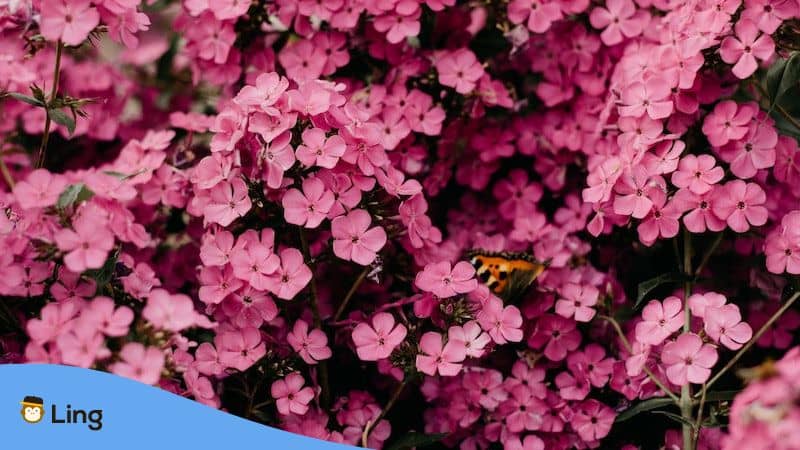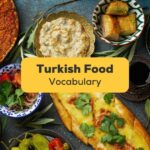Are you an anthophile? In this post, we’ll go over the plandaí or plants in Irish and their meanings. This can be a helpful way to learn Irish because it gives you an idea of what plants are used in the language and why they are important. Let’s start!
There isn’t a feeling quite like exploring Southern Ireland (or Northern Ireland, for that matter) and taking in nature’s bounty. It does wonders for the soul, and a little extra for the mind, particularly if you feel like you’re exploring the Irish language by identifying the local flowers and giving them their correct names. Of course, the most famous is the clover or Seamair, as much a symbol for St Patrick’s day as Guinness.
In many ways, learning a language is like tending your garden. You start with a seed, perhaps a deep-seated sense that you want to learn something new, and then every day, you water your curiosity. Before you know it, a year down the line, you have an entire tree of knowledge, an interconnected web that gives you a sense of well-being, which makes me think of the famous quote, “to have another language is to possess a second soul.”
Ling is here to aid you every step of the way. Our lessons are the water that sets the whole process going. Sign up for a daily 10-minute lesson and see your Irish language ability start to flourish. If you didn’t already know, Irish is just of many languages the platform caters to; there are 60 in total. That means your one subscription equates to 60 subscriptions wrapped up in 1 bundle without the hassle of 60 separate subscriptions.
Plants In Irish
Note: Some of these plants and flowers have the same names as they do in English.
| English | Irish |
| Buttercup | Cupán im |
| Cactus | Cachtas |
| Clover | Seamair |
| Corn | Corn |
| Daisy | Nóinín |
| Daffodil | Lus an chromchinn |
| Dandelion | Dandelion |
| Fern | Raithneach |
| Flower | Bláth |
| Iris | Iris |
| Ivy | Eidhneán |
| Hyacinth | Hiasaint |
| Lavender | Labhandair |
| Lilies | Lilies |
| Mint | Miontas |
| Moss | Caonach |
| Mushroom | Muisiriún |
| Petal | Peitil |
| Primrose | Saobhadh |
| Root | Fréamh |
| Rosemary | Marós |
| Thistle | Feadóg |
| Tree | Crann |
| Violet | Violet |
| Weed | Fiailí |
Soil Composition In Ireland
Irish soil is some of the best in the world for growing plants and Irish flowers. The first thing to say is that the soil in Ireland is very acidic due to a geological process called washing out. The only way to counter this acidity is by adding lime. Parts of Ireland, such as Clare and Kilkenny, are rich in clay, leading to waterlogged soil perfect for plants like rushes.
However, the most common soil type is known as ‘brown earth,’ which is perfect for agriculture. A stunning 4.4 million hectares of Ireland’s 6.9 million total land mass is used for agriculture. In hilly areas, we find more peaty soils. Highly acidic, it is difficult for many plants to grow here except bog cotton and heather. You can’t grow crops here.
Look out for the early dog violet in wooded areas, a particularly stunning flower with heart-shaped leaves and five violet petals.

Phrases Related To Plants In Irish
Perfect for when you’re at the market or conversing with people about plants and flowers
| English | Irish |
| Are these flowers fresh? | An bhfuil na bláthanna seo úr? |
| Do you like mushrooms? | An maith leat beacáin? |
| How much are these roses? | Cé mhéad atá na rósanna seo? |
| Is there a flower market near here? | An bhfuil margadh bláthanna in aice leis seo? |
| Is this plant dangerous? | An bhfuil an planda seo contúirteach? |
| My favorite flower is the daisy | Is é an bláth is fearr liom an Nóinín |
| What is your favorite flower? | Cad é an bláth is fearr leat? |
| When do these flowers blossom? | Cathain a bhláthaíonn na bláthanna seo? |
| Where is the nearest forest? | Cá bhfuil an fhoraois is gaire? |

What Do Different Plants And Flowers Symbolize?
Going back through ancient literature, from Shakespeare to the Romans, you’ll find that a significant weight has been put upon the symbolic nature of plants, especially flowering plants. Perhaps the most poignant is the poppy which symbolizes the blood spilled during world war 1 and 2.
Although an ancient tradition, the language of flowers was particularly deep-rooted in the victorian era. As you might know, the Victorians were very chaste and coy, emotions were buried, and flowers were seen as a way to overcome this. Any well-respecting Victorian had a copy of the Bible and guidebooks for interpreting the language of flowers.
Some examples include gifting aloe, which meant you were feeling bitter, or apple blossom, which showed preference. If you received roses from someone you didn’t like, you’d reply with a yellow carnation that expressed hatred. Bluebells were seen as representing kindness, whereas tulips meant passion.
It also mattered how you tied the flowers. If the ribbon was connected to the left, it meant you were trying to communicate something about yourself, and if it was linked to the right, it was about the recipient. All very complicated, and I am glad things are much more direct now with social media.
Learn Irish With Ling

So what is it for you? Do you prefer yellow flowers or red? Do you know the county flower of your place of birth? The rabbit hole is endless when it comes to exploring flowers and plants. Ling is the perfect place to learn Irish plants and language more generally. You’ll find everything you’d expect in a language learning app, plus a few extras that set the app apart.
If you liked this blog, think about checking out a few other related such as Irish food and Irish tongue twisters.



































































